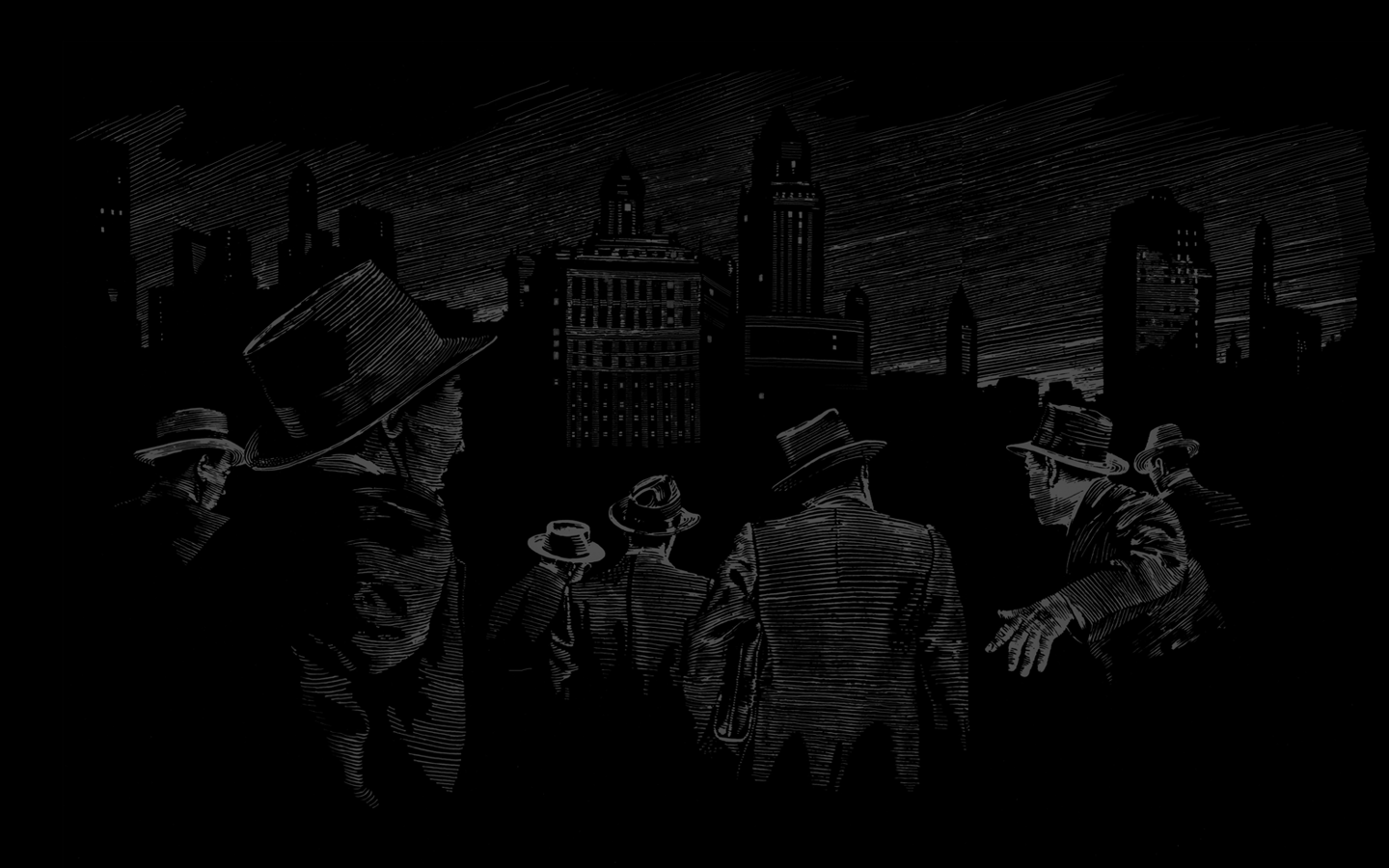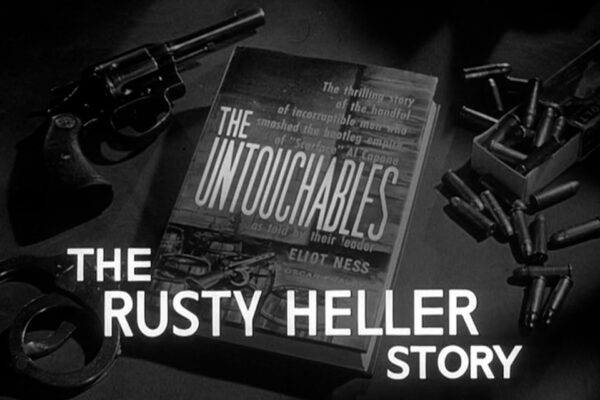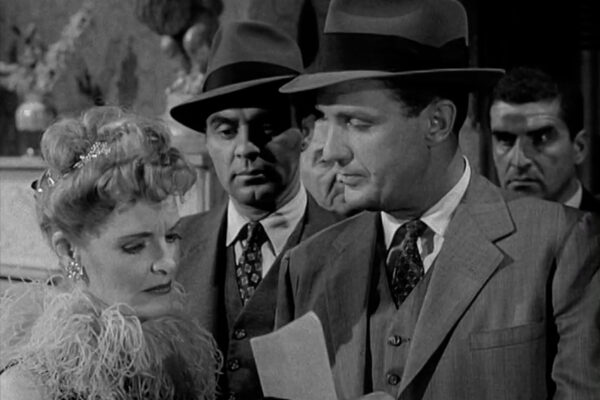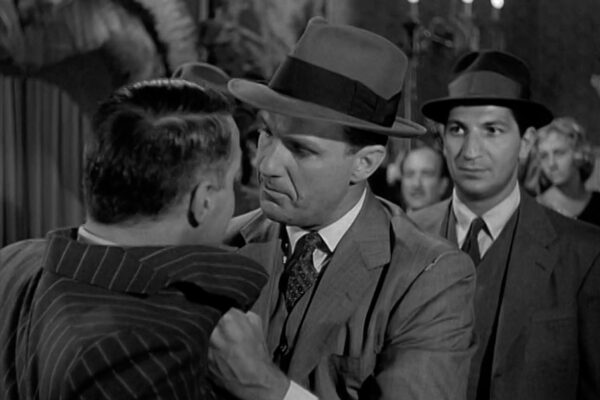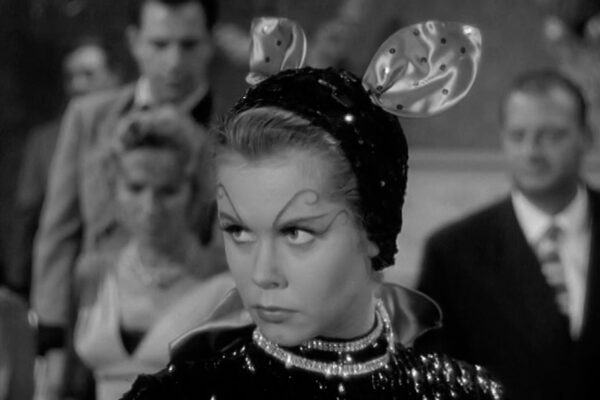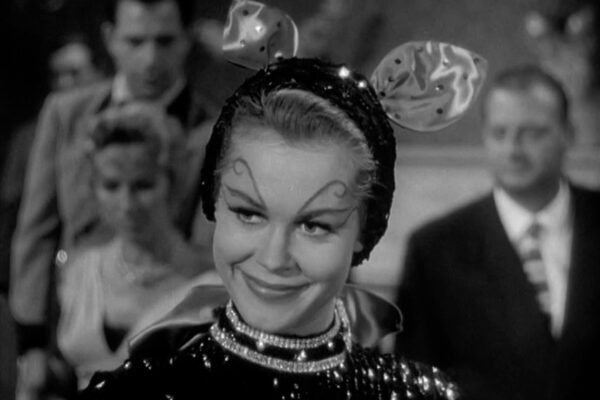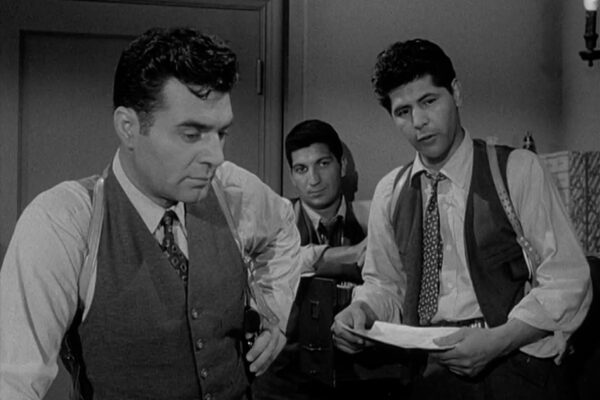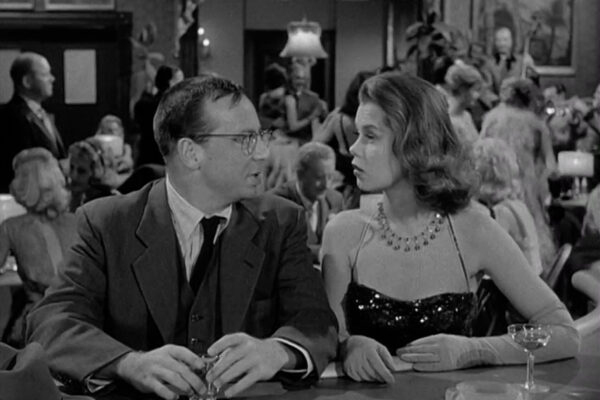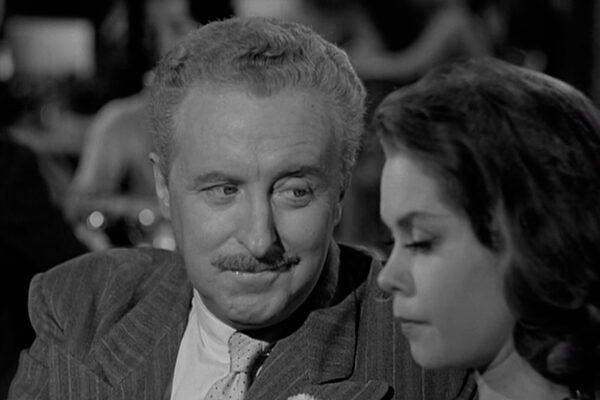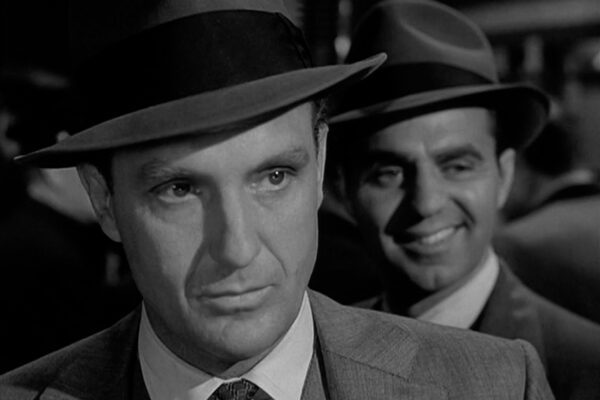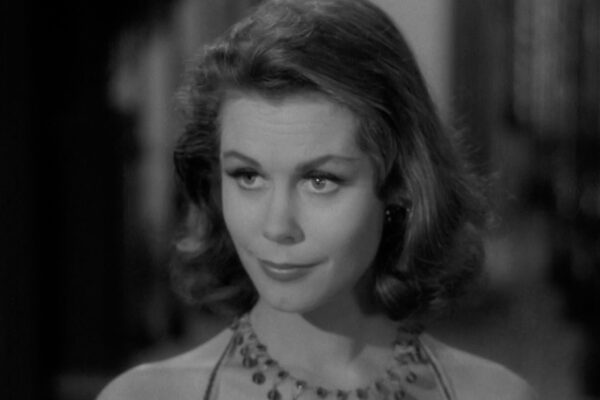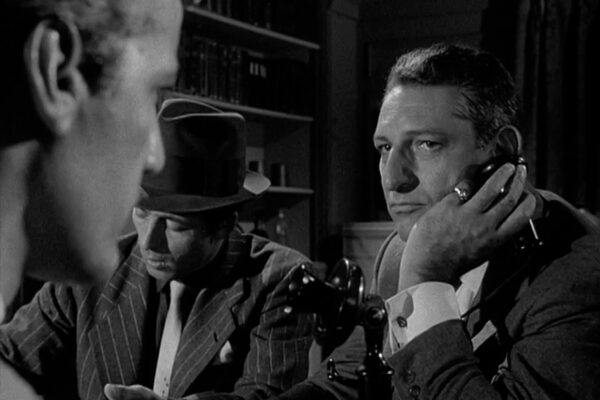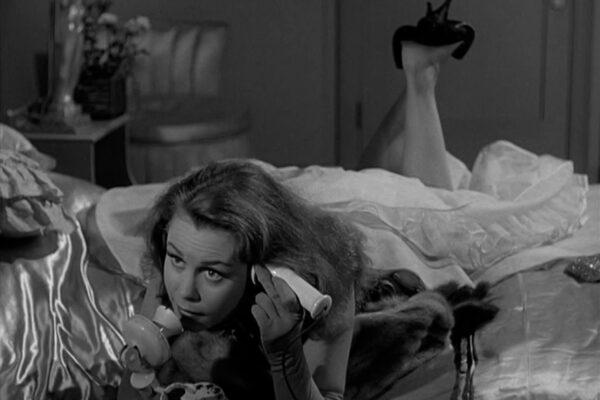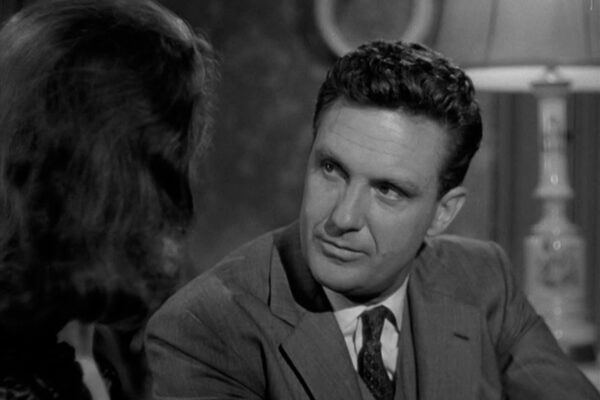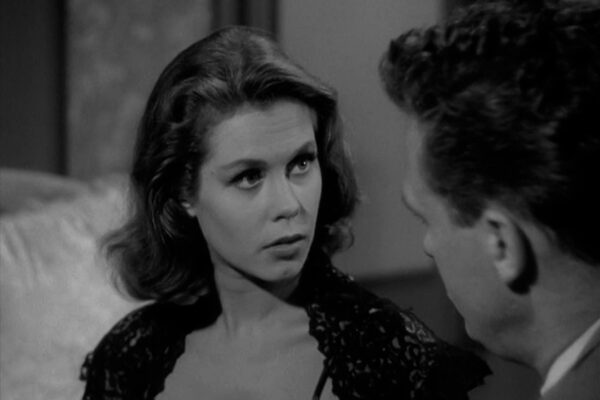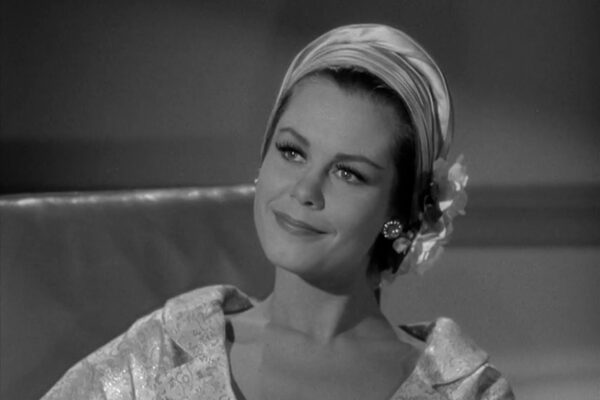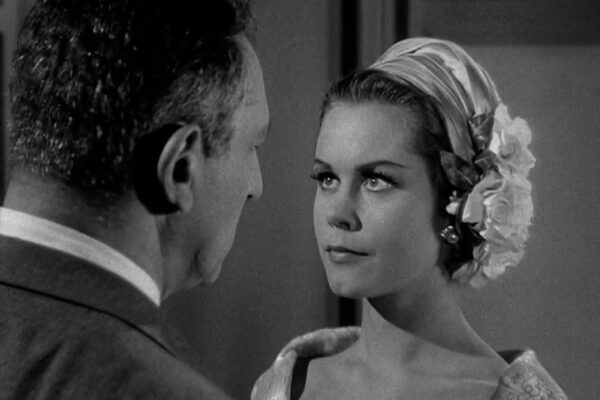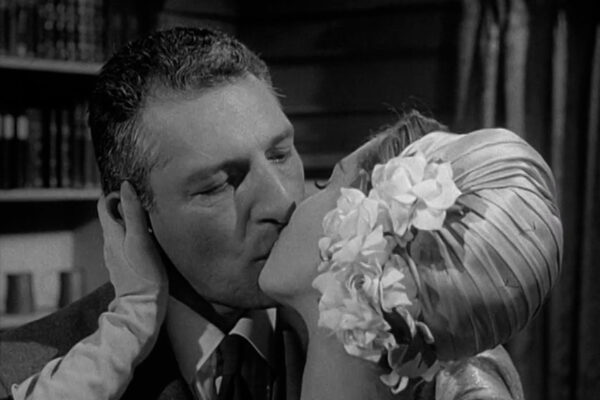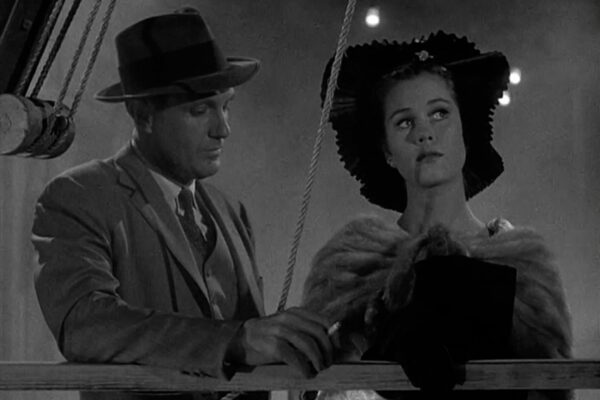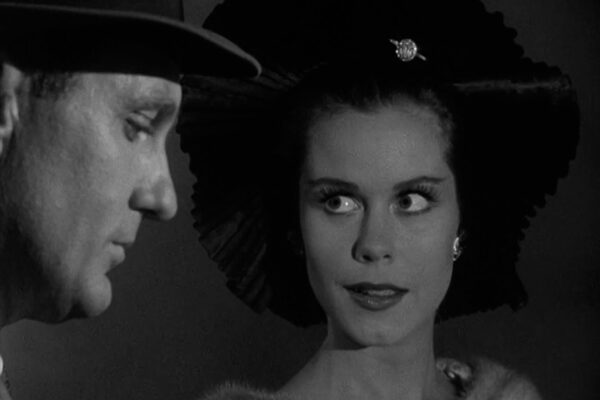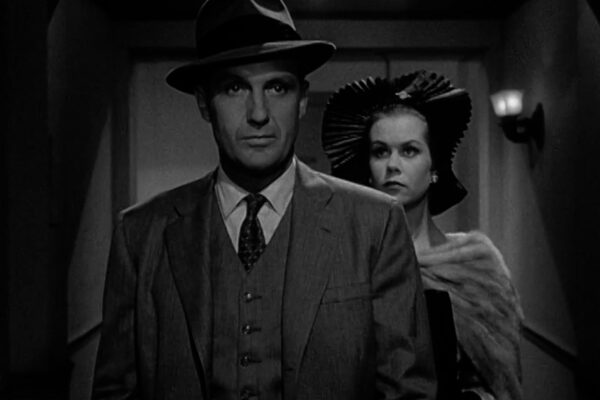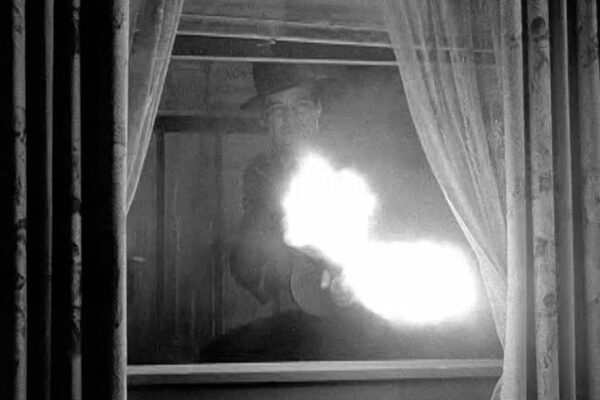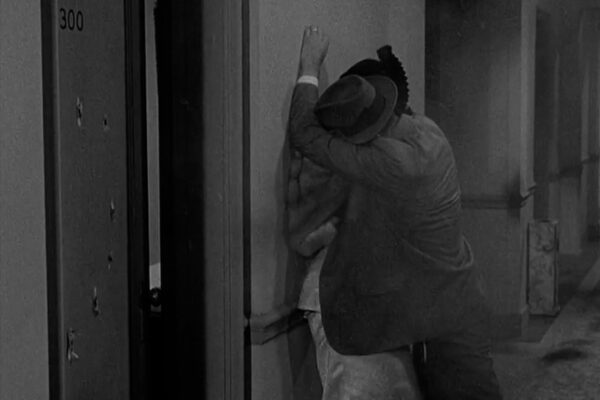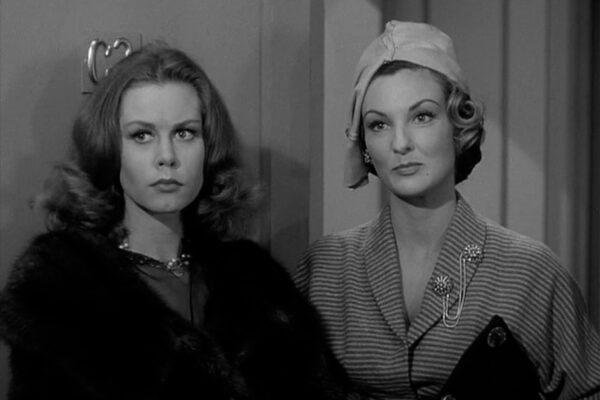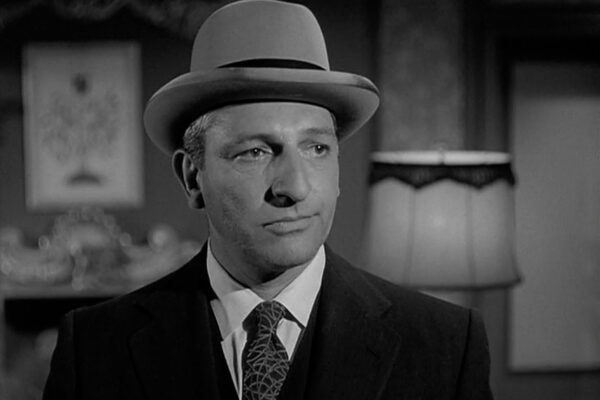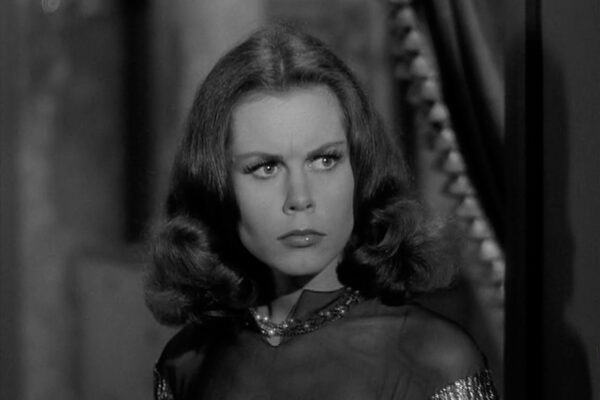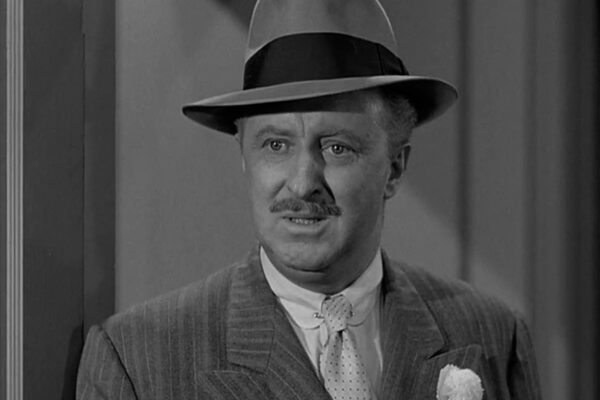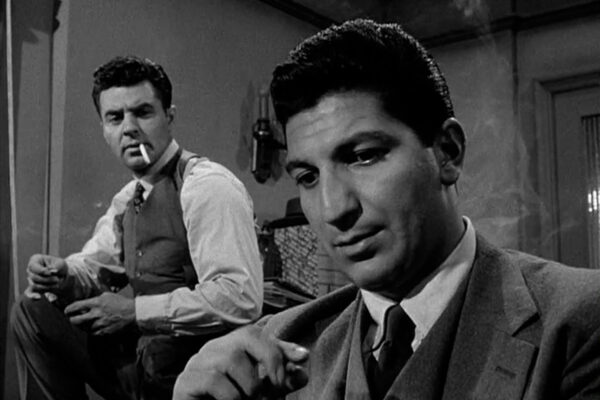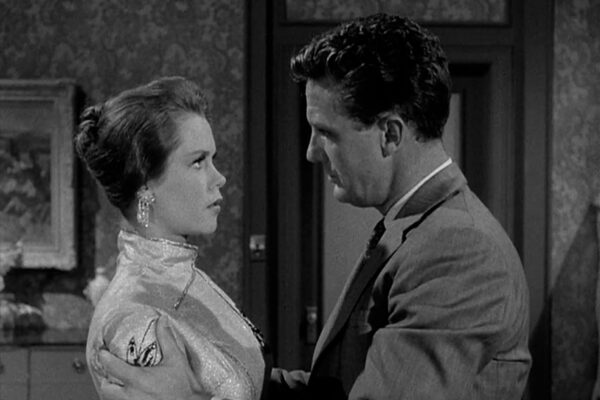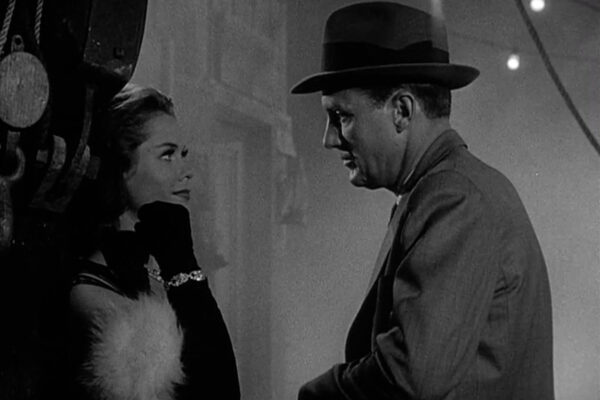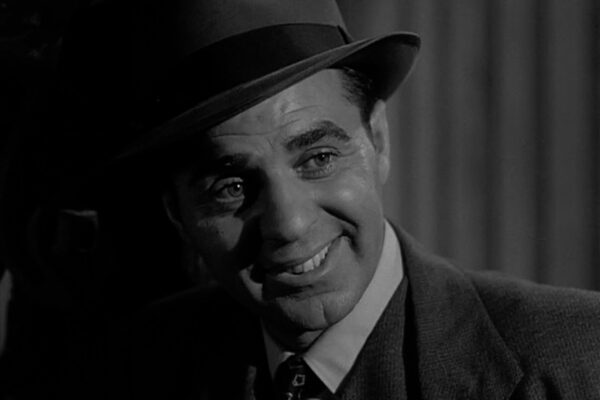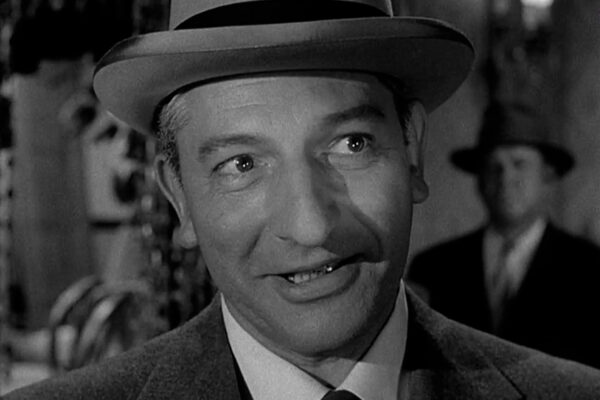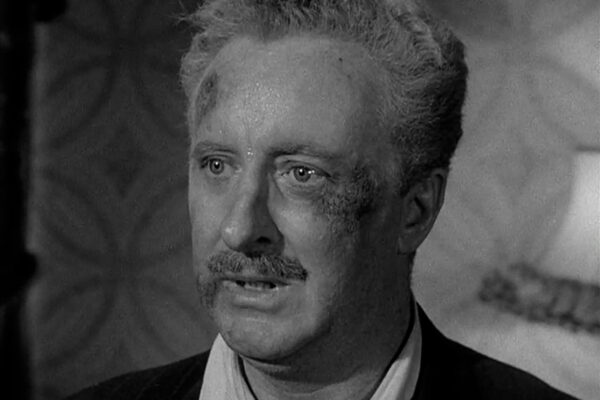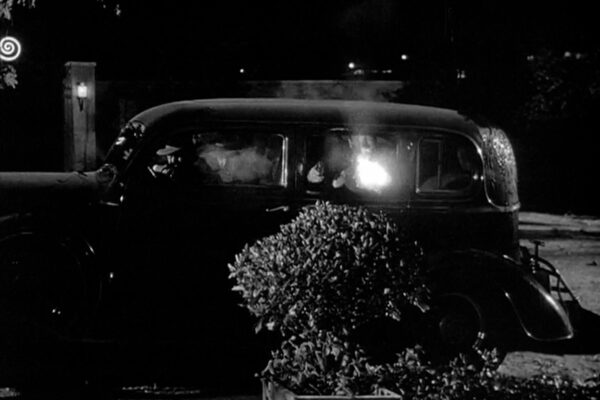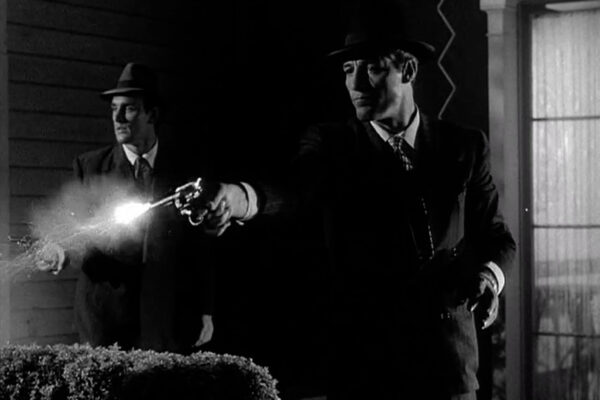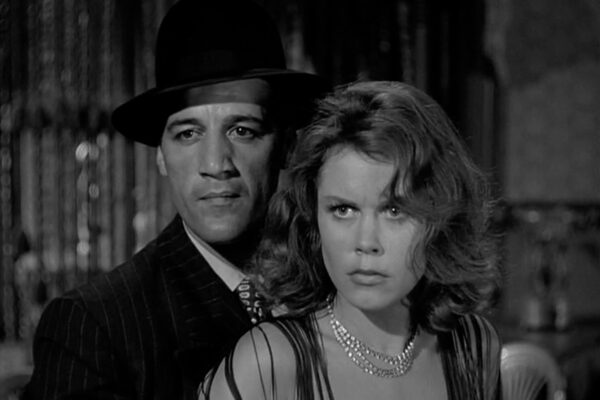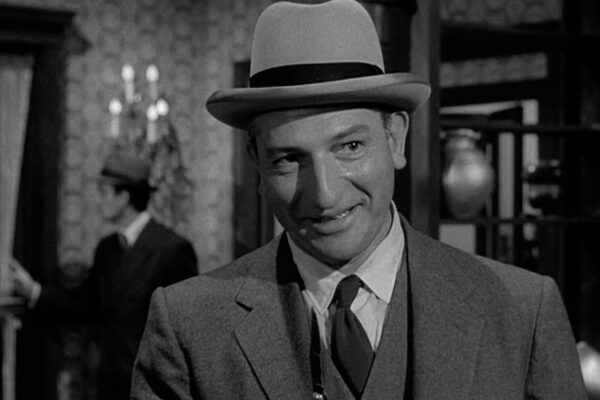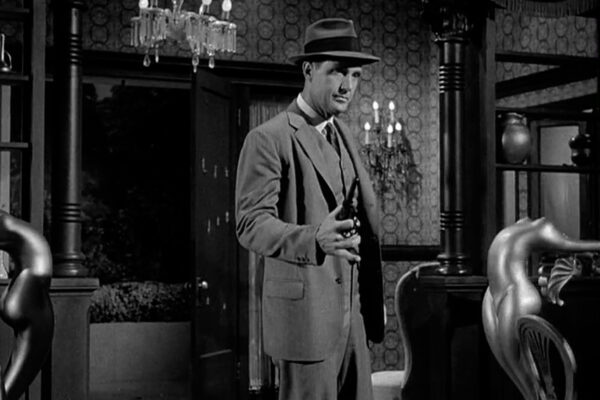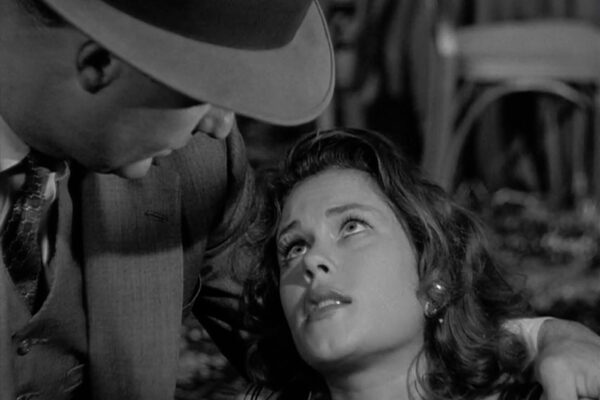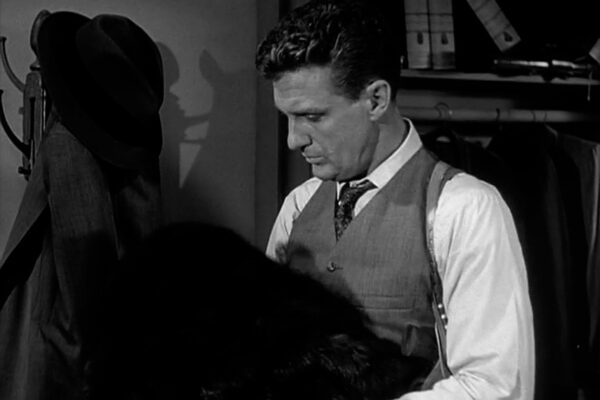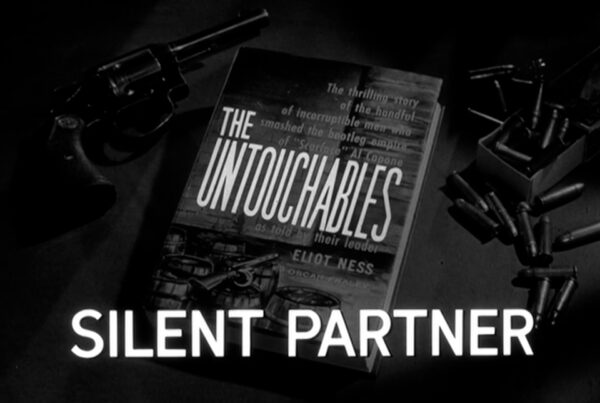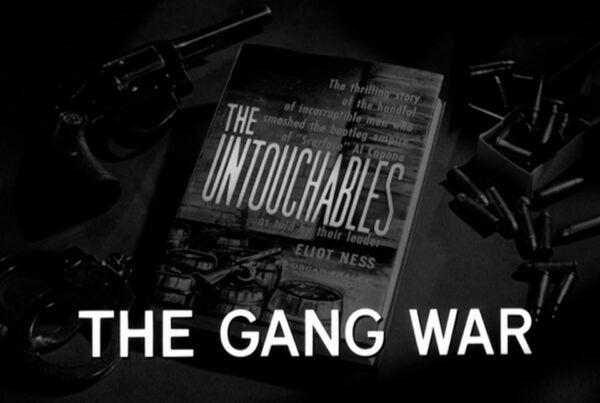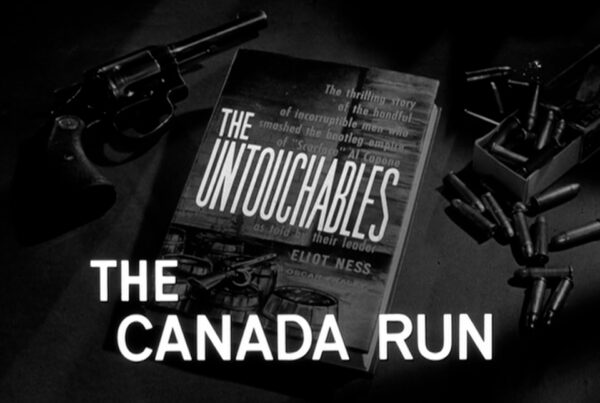THE RUSTY HELLER STORY
Airdates: October 13th, 1960 and March 2nd, 1961
Written by Leonard Kantor
Directed by Walter E. Grauman
Produced by Josef Shaftel
Director of Photography Charles Straumer
Co-Starring Elizabeth Montgomery, Harold J. Stone, David White and introducing Paul Picerni. Featuring Normal Fell, John Duke, Rita Duncan, Linda Watkins, John Close, Betty Garde, Pete Candoli, Allison Hayes, George Di Normand
“In the last weeks of March 1931, Eliot Ness and his Untouchables were hitting hard at the Capone empire. Every day, gunshots rattled the concrete as Ness led his men in raid after raid. While prosperity stayed around the corner for most of us, it came out and licked the hands of mobsters, bootleggers, and hoods. For them, it had been Rome at its height, under Emperor Al Capone, until Eliot Ness moved in to clean up. Each speakeasy knocked out by Ness, each brewery put out of commission, each Capone man lost made it more obvious: Capone’s throne was tottering. It was a first-rate opportunity for someone with brains and cunning to use the battle to set his own table. But who had the guts to move in? There was still a lot of fight left in the old Emperor.
“The smart money was on an Easterner named Charles Pops Felcher. He had arrived from New York less than a week ago with his lawyer, Archie Grayson But Pops Felcher’s reputation as a top-flight mobster had long preceded him and already the underworld was currying favor at a party given by the well known Madame Flora at her establishment in the suburbs of Chicago.”
A beautiful and ambitious young woman moves in to capitalize on Eliot Ness’ war on Al Capone by ascending the social ladder of the mobsters trying to take over Capone’s disintegrating empire.
Rusty Heller (Elizabeth Montgomery), sets her sights on Charles “Pops” Felcher (Harold J. Stone) but is rebuffed by a bodyguard at a reception given for him at Madame Flora’s. Hoping to locate a Capone gunman on the run, Ness bursts in and warns Felcher that “Capone is only round one.” Rusty, impressed by Ness’ swaggering authority, but virtually unnoticed by her target, turns her attention to Felcher’s lawyer, Archie Grayson (David White), who is immediately and irrevocably seduced.
One of Rusty’s many admirers is a man close to Jake Guzik. Grayson would like her to milk him for information on Capone’s business affairs. She plans to do so, but learns instead that the Capone mob is planning on eliminating Felcher in the Turkish baths. She no sooner learns of this when Ness breaks down the door again and everyone is taken into custody except Rusty, who wriggles her way into a private audience with Eliot Ness.
At her apartment, Rusty is able to slip away from Ness long enough to phone Felcher and warn him of the impending showdown. Realizing that she may be able to make a quick buck on Capone’s books, she offers to try and get them for Ness in exchange for cash. In no position to offer more than gratitude, Ness tries to appeal to her sense of decency. The encounter provides little material gain for either, but they are mutually charmed.
But Rusty’s immediate goal to Felcher. She uses Grayson to meet Felcher again, this time on her terms and she is well received. Felcher hopes to put his newfound girlfriend to good use and arranges a trap for Ness. But Rusty bungles it at the last minute, realizing she has too much of a crush on the federal agent to have him killed. Spurned and unhappy, lawyer Grayson alerts Felcher’s previously unseen wife to the liaison. Mrs. Felcher arrives to claim him and an expensive fur coat he gave Rusty as a gift. Furious with both Grayson “the squealer” and Felcher the “Indian-giver,” she plots revenge.
She agrees to marry Grayson, but only as a pretense to gain access to immigration papers that had been used as a wedge against Felcher in a partnership that began with Felcher’s illegal entry into the States. Rusty then hopes to ransom the papers back for a considerable sum. To square her debt with Felcher, she sets him up with Capone’s Death Squad in return for another cash payment.
In her last clandestine meeting with Eliot Ness, she offers to lead him to Capone’s books if he will consent to a weekend tryst. Flattered, Ness declines. Before departing, she alludes to the big engagement party planned for that night and inadvertently alerts Ness to the possibility of catching Felcher in the act of violating some federal statute. He puts Hobson on her trail.
Her plan falls apart when Felcher escapes the Capone ambush, but before he can harm her, Ness arrives to intervene. Presumed disposed of for his involvement with Rusty and the immigration papers, Grayson lives long enough to gun her down as she runs for cover. In Ness’ arms, she collapses and dies.
“The next day, October 24, 1931, brought a double victory for Ness. He heard Judge James H. Wilkeson fine Al Capone $50, 000 and sentenced him to eleven years in the federal penitentiary. And later, was assured by the assistant federal district attorney’s office that Charles Pops Felcher would be deported on the evidence of the papers found on his person But what would have satisfied Rusty Heller the most was the arrest of Felcher’s American wife. The charge: Possession of stolen goods. The goods: A $25,000 Russian sable coat.”
REVIEW
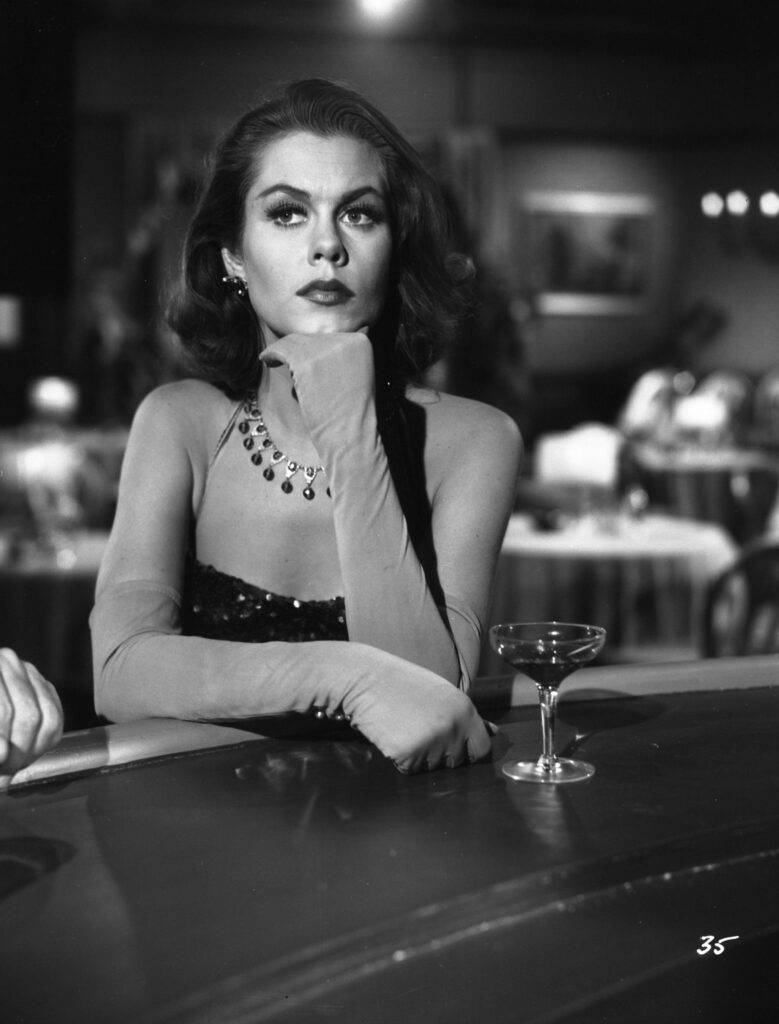 Rusty Heller is not only a drop-dead knockout in a leggy catsuit – one of a nifty dozen outfits she wears in the hour – but ambitious and charming in her alternately brazen, then soft southern manner. She is also, somehow, forgivably ruthless. Her fictional tale, intricate and superbly written, is wrapped around the central Capone saga and about as close to a classic love story as The Untouchables will ever get.
Rusty Heller is not only a drop-dead knockout in a leggy catsuit – one of a nifty dozen outfits she wears in the hour – but ambitious and charming in her alternately brazen, then soft southern manner. She is also, somehow, forgivably ruthless. Her fictional tale, intricate and superbly written, is wrapped around the central Capone saga and about as close to a classic love story as The Untouchables will ever get.
On its face, it would seem that the story of a street smart, the gold-digging hooker with a temper could hardly be the stuff of whimsical romance or that the central character could be made agreeable, much less lovable. But that indeed she is, thanks to Leonard Kanter’s ability to paint the portrait and Elizabeth Montgomery’s talent in fleshing her out.
The electricity between Ness and Heller arcs with a never-before-seen and never-to-be-repeated intensity. It is Eliot Ness’ single flirtation with everything he has sworn to defeat. An alluring siren that brings tragedy to all those who dare touch it, Rusty is the consummate femme fatale.
Ness is immediately and undeniably charmed by her playfulness, his concrete exterior fracturing into smiles. Their chemistry combines instantly on their second encounter when everyone else is taken into custody in a noisy, confusing speakeasy raid except Rusty, who has “important information on Mr. Reiner. Mr. Capone’s Mr. Reiner.”
“Commonplaces give me amnesia and amnesia leads to lockjaw in us higher animals,” Rusty protests. “Why don’t you escort me home? If I don’t prove interesting enough you can always call a cop.”
Ness’ eyes twinkle, his persimmon lips broaden into a grin restrained.
“Oh, well lookie there,” Rusty purrs. “Did anyone ever tell you that you’ve got a smile that lights candles in your eyes, Mr. Ness.”
“You’re liable to see the burning of Atlanta in my eyes if you’re pulling a fast one,” he warns, grin intact.
The Rusty Heller Story is the only time in the series Ness appears to be captivated by a woman. (His wife is never seen and seldom referred to.) He obviously enjoys Rusty’s company in their lingering encounters, but alas, he is as unapproachable as he is untouchable. She beckons more than once, but red flags abound. Her only concern is money, power, and ultimately revenge. Or is it? The dangerous crowd she runs with sees only that side, but Ness, twice her age, sees her as young and vulnerable.
At length, he promises her that when they meet again, she’ll have that date she has so admirably resisted – just before she dies. This powerful, utterly special four-star episode remains one of the series finest moments. It’s no wonder that in 1997, this episode was listed no. 97 on TV Guide’s 100 Best Episodes of All Time.
Elizabeth Montgomery was nominated for an Emmy for her splendid performance in this captivating hour, the premiere installment of the series’ second and most successful year.
AND INTRODUCING PAUL PICERNI…
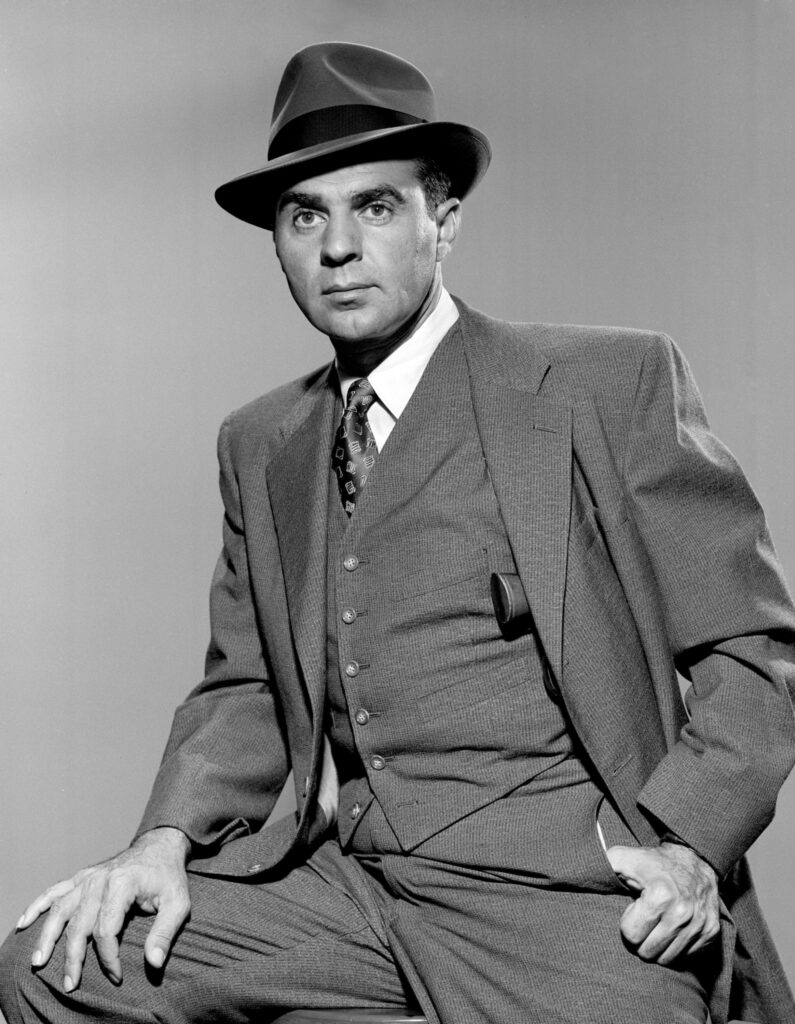 While there’s much to be appreciated about this wonderful episode, it should also be noted that Paul Picerni makes his first appearance on The Untouchables as federal agent Lee Hobson. Cast in the summer of 1960 by producer Jerry Thorpe, Picerni had originally appeared as night club manager Tony Liguri in the Desilu Playhouse film in 1959. After being awarded the Distinguished Flying Cross for his service in World War II, he worked under contract for Warner Brothers, appearing in 1953’s House of Wax – one of the first 3-D feature films made in the United States – and would later go on to appear in over 60 films and 150 television shows.
While there’s much to be appreciated about this wonderful episode, it should also be noted that Paul Picerni makes his first appearance on The Untouchables as federal agent Lee Hobson. Cast in the summer of 1960 by producer Jerry Thorpe, Picerni had originally appeared as night club manager Tony Liguri in the Desilu Playhouse film in 1959. After being awarded the Distinguished Flying Cross for his service in World War II, he worked under contract for Warner Brothers, appearing in 1953’s House of Wax – one of the first 3-D feature films made in the United States – and would later go on to appear in over 60 films and 150 television shows.
In a tale stranger than fiction, Picerni credits Johnny Roselli, a “representative of the Mafia,” as being the singular reason he was cast in the show. Roselli had personally known Al Capone and Frank Nitti at the height of their bootlegging empire and would later form various relationships with politicians (including John F. Kennedy) and celebrities like Frank Sinatra. It was during his time on the West Coast where he earned a reputation for being a “gentleman gangster.”
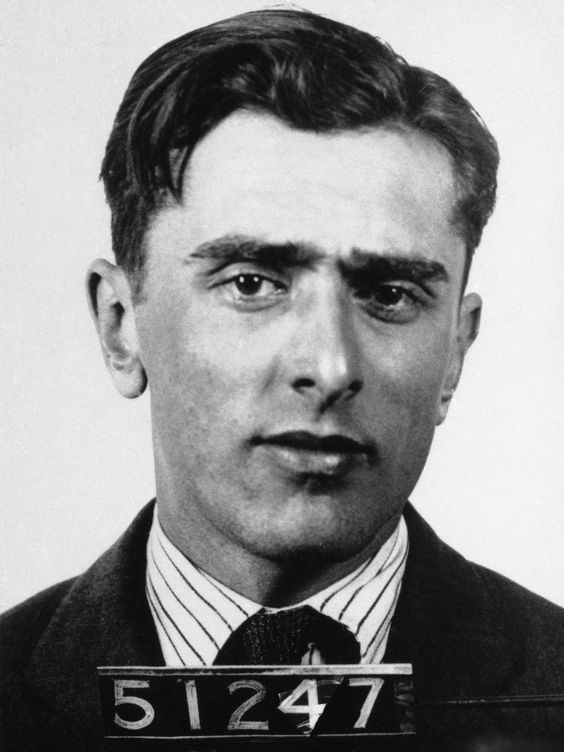
Mafia liaison Johnny Roselli, obviously posing for a school portrait, in 1943.
Picerni recounts that Roselli and Sinatra had called a meeting with Desi Arnaz to address the unglamorous portrayal of Italians on The Untouchables. Roselli suggested to Arnaz that they hire an Italian actor – like Paul Picerni – to play one of the good guys. While the conversation momentarily appeased Roselli and Sinatra, the “Italian problem” would only grow more severe as the show’s success skyrocketed a few months later in 1961. Shortly thereafter, Picerni and his wife Marie were debating on whether or not he should take an acting job that just didn’t feel right and which Picerni ultimately turned down. The next day, The Untouchables came calling.
Hailed as “the friendliest actor in Hollywood,” Picerni’s affable nature and good-guy looks would make him a warm and friendly counterbalance to Robert Stack’s unrelenting Eliot Ness. Other than the opening billboard proclaiming his arrival, Hobson slips right into the proceedings without much fanfare, and his rapport with Ness is readily established.
Early on, Hobson’s smile is visible as he watches Rusty flirtatiously compliment him. (Picerni notes that cinematographer Charlie Straumer intentionally lit Stack with a special Oberon bulb to make his blue eyes look even fiercer.) In a later scene after Rusty tempts Ness with a weekend trip away together, Hobson remarks “I wonder if I’d had the willpower to turn down a mountain top with her.”
Hobson and his demeanor will serve Ness for the remainder of the series and their friendship even becomes a plot point in the Third Season episode “The Silent Partner,” where Picerni became the de-facto star of the hour – even to Stack’s momentary chagrin.
While Picerni is a welcome addition (and perhaps the best remembered right-hand man after Jerry Paris and Anthony George left their respective roles in the First Season), he would also advocate for his co-stars Nick Georgiade and Abel Fernandez, helping them negotiate raises as the series continued.
“Paul was the last to join our permanent group, yet he’s the number-one force next to Stack,” said Nick Georgiade not long after Rusty Heller aired. “This might have made for a situation since Fernandez and myself are members of the original team. But petty jealousies fade away when Paul appears. He loves people and enjoys their success as much as his own, and you’ve just got to respect and like him.”
Picerni would later travel with Georgiade and Fernandez as part of “The Intocables,” a musical theater performance parodying West Side Story and The Untouchables in live performances in Mexico City. The three would also appear together as gangsters in the Spanish film Le Edad de la Violenica.
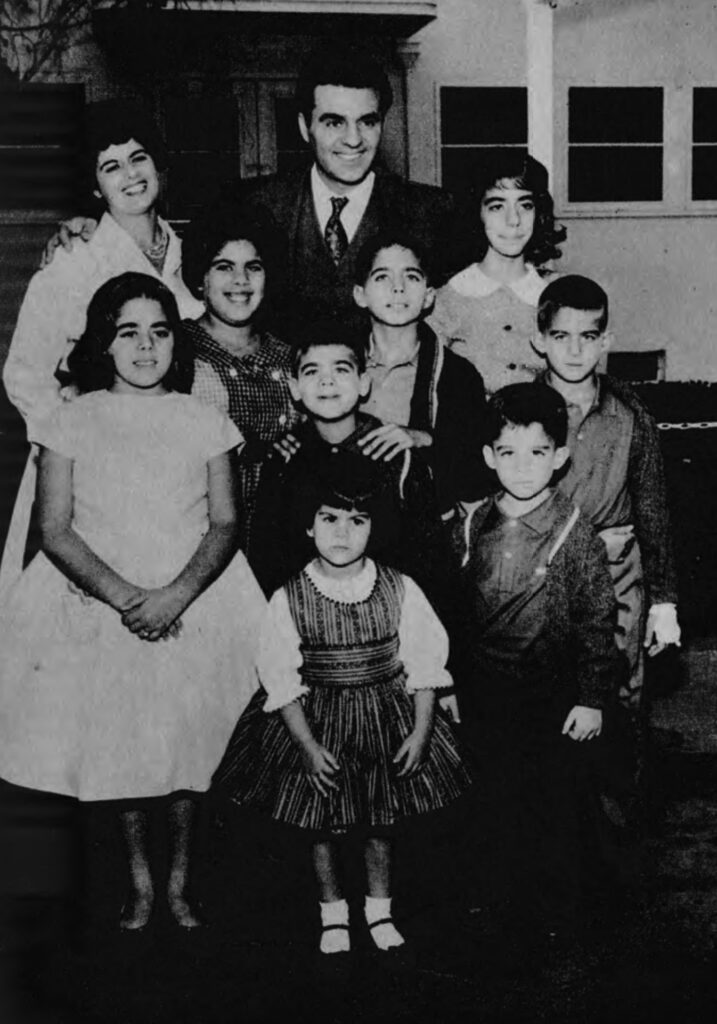
The Picerni Mob was spotted on the Desilu lot in 1961 by Radio and TV Mirror Magazine. Paul is flanked by wife Marie and daughter Nikki. From left-to-right, the children are Maria, Gemma, Michael, Paul Jr, Philip, and Charles. Little Gina is in front. Marie recalls that Paul “loved working,” but that raising their family together was a real joy.
Picerni recognized early on that Stack was the star of the show and assumed his position on the call sheet accordingly. Behind-the-scenes, Picerni was Stack’s right-hand man as well, and the two maintained a budding friendship behind-the-scenes, making a point to eat lunch together every day.
Of Stack’s performance, Picerni remarked, “Bob didn’t appear to be doing a lot when you were on the soundstage with him, but later when you saw it on film you realized he was right on the money with his performance…he was just so right for it.” When Stack died in 2003, Picerni said, “Bob inhabited that role. He was Eliot Ness and we just followed his lead. My three years with Robert Stack on The Untouchables was the high point of my entire career.”
As the Third Season approached in mid-1961, Paul would bring his brother Charlie Picerni out from New York to act as his stand-in and a stunt man on the series. The younger Picerni would go on to have a prolific career in the film industry, working on the stunt department for blockbusters such as Die Hard and as a second unit director on Basic Instinct, among countless others. Several other members of the Picerni family would also go on to work in the film industry, including his granddaughter Katie. Interviews with Picerni’s family will appear in a future episode of The Untouchables Retrospective podcast.
In 2020, Charlie Picerni is still working after getting his start on the Desilu lot six decades ago. And every weekend, Paul’s widow Marie can be found watching reruns of The Untouchables on the Heroes & Icon channel.
QUOTES
Screenwriter Leonard Kanter does marvelous work throughout this episode, from the opening Winchell narration to its suggestive innuendos, so much so that the entire scenes are nearly worth quoting in their entirety.
RUSTY: Big news, honey. Mr. Capone’s sore at the way Fletcher’s moving in. He’s gonna take action.
FELCHER: What kind of action?
RUSTY: Boom boom action…
FELCHER: Let’s have the rest of it. When? Where?
RUSTY: When is what I’d like to know, too, honey. When? When am I going to be permitted to meet Mr. Felcher in the position you say I have achieved? I mean, as your girl.
FELCHER: I told you, as soon as we find the right time.
RUSTY: I find the right time every day, honey.
FELCHER: Rusty don’t play with me.
RUSTY: Don’t you play with me, Mr. Laywer.
FELCHER: Rusty, if there’s any danger I’ve got to warn Pops.
RUSTY: Then let me warn you, sugar. You better keep your word to me, or you ain’t never going to wipe your hands on my towels no more.
The episode is also charming for its humor, like when a gangster punctuates a hallway with bullets, prompting a neighbor to nonchalantly reply, “they’ll have to have that wall replastered.”
Kantor’s background as a playwright fits Rusty like a satin glove in more ways than one, even as Ness cradles her as she succumbs to her bullet wound.
RUSTY: “Hey…if by some chance, you and I wind up at the same place, we have a date.”
NESS: “It’s a date.”
RUSTY: “Is my lipstick still on?”
NESS: “Still on.”
Kantor was no stranger to weaving crime-drama yarns, as his 1953 Broadway play Dead Pigeon told the story of a woman under police protection as a material witness in a trial set against the death of Abe Reles, a known hitman for the National Crime Syndicate. Adapted into a 1955 film, Tight Spot (and directed by Phil Karlson before he’d take up the reigns on The Untouchables for the Desilu Playhouse), the story of Kantor’s work was inspired by none other than mob mistress Virginia Hill. More on that in a moment.
OBSERVATIONS
• In 1961, Elizabeth Montgomery was nominated for her first Emmy for an Outstanding Single Performance by an Actress in a Leading Role for her performance in this episode. Stack was instrumental in securing the part for Montgomery. Her father, Robert, was one of Stack’s closest show business friends.
• While Rusty Heller was the first episode that aired, A Seat On the Fence was the first episode filmed in the summer of 1960.
• Following Rusty Heller, Screenwriter Leonard Kanter would impart numerous strong and colorful female leads to Untouchables canon, most notably in The Underground Court, The Lilly Dallas Story, and The Ginnie Littlesmith Story. While not as promising, his first Untouchables script was the First Season’s Underground Railway, followed by the far better The White Slavers, which coincidentally co-starred Dick York, Elizabeth Montgomery’s future on-screen husband Darrin Stephens in Bewitched. Of course, this hour manages to pair future Bewitched stars David White and Montgomery together.
• Narratively speaking, this episode is notable for taking place within the same time frame as the Desilu Playhouse story and its plot revolves around Ness’ case against Al Capone. While the original Untouchables film showcased the campaign to destroy Capone’s bootlegging empire, this backdrop of this episode is Ness’ effort to secure information on the mobster’s books. This clever insertion of Rusty’s story is not without its chronological complications (we’re just now meeting Lee Hobson, after all) but in those days, no one could hit rewind on their VHS player to cross-reference. Regardless, the hour makes good use of footage from the Playhouse drama.
• In the Desilu Playhouse film, Ness isn’t married until after he successfully wiretaps the Montmartre Club. In this episode (which takes place at the same time) he’s already married. This makes Ness’ mild flirtation with Rusty a little meretricious.
• The focus-puller on this episode may have been new or a temp and it’s our loss – several over-the-shoulder shots of Elizabeth Montgomery are embarrassingly soft, a rare misstep in Charlie Straumer’s repertoire.
• Capone’s gunmen are conveniently inept in this episode, mussing up two perfectly good opportunities to bump Felcher off.
• Be sure to check out Noel Murray’s 2017 essay of Rusty Heller at AV Club, where he writes “It’s [the episode’s] suggestiveness—not always lusty, though that was certainly implied—that makes Montgomery’s performance and the whole femme fatale archetype so potent.”
HISTORICAL NOTES
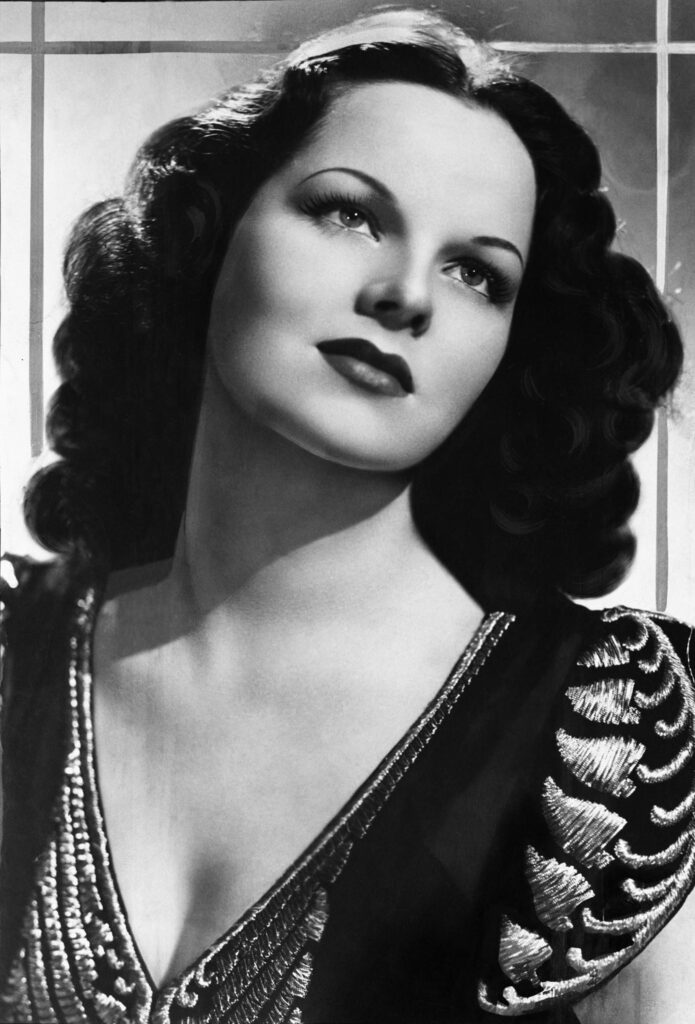
Virginia Hill, pictured off-duty from grande horizontale.
As if the circumstances around Paul Picerni’s casting weren’t meta enough, the character of Rusty Heller is loosely based on Virginia Hill, the so-called “Queen of the Mob” who consorted with many known undesirables throughout the 1930s including Frank Nitti, a Capone bookkeeper named Joe Epstein, and later Bugsy Seigel.
Hailing from Lipscomb, Alabama, she moved quickly through the ranks of the criminal underworld in her 20’s, acting as a courier and messenger and appreciated for her many talents. Virginia memorably appeared at the 1951 Kefauver Committee to testify on organized crime wearing a $5,000 mink cape, broad-brimmed hat, and silk gloves. Nicknamed “Flamingo” by Seigel, Virginia ultimately outlived her various gangster lovers until she died of a drug overdose in 1966.
Virginia Hill was a consistent source of inspiration for screenwriter Kantor, as she was the female protagonist in his script for Dead Piegon.
In another curiously related thread, Virginia Hill would be brought to life by Annette Bening in the 1991 film Bugsy, starring Warren Beatty as the titular character. Only a few years earlier, Beatty had directed, produced, and starred in Dick Tracy (1990) based on the comic book of the same name. The inspiration for Dick Tracy? Eliot Ness.
GALLERY
From Stuart Fanning comes this complete unedited open for this Second Season episode as originally broadcast complete with Chesterfield sponsor tag and commercial.


